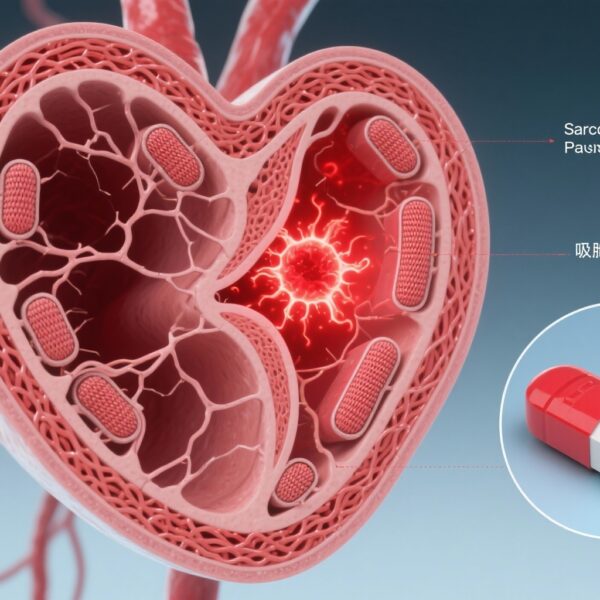Highlights
– APOE ε4 reduces single-neuron excitability in the anterior olfactory nucleus (AON) across ages and sexes in awake transgenic mice.
– Adult female mice show higher AON excitability than males; this sex difference disappears with aging.
– Aging increases AON network oscillatory power regardless of genotype and sex, while genotype and sex further modulate network dynamics.
– Interactions between APOE ε4, age and sex in the AON may provide electrophysiological signatures for early Alzheimer’s disease (AD) vulnerability and guide sex- and genotype-specific interventions.
Background
Apolipoprotein E (APOE) ε4 is the strongest common genetic risk factor for late-onset Alzheimer’s disease (AD), reliably associated with increased incidence and earlier onset of clinical symptoms. Classic neuropathological staging of AD indicates that olfactory structures can show early pathological changes, and olfactory dysfunction is among the earliest measurable clinical features in many patients with prodromal AD. Understanding how APOE ε4 influences olfactory circuit physiology — and how this effect interacts with age and biological sex — is therefore of high mechanistic and translational interest.
The anterior olfactory nucleus (AON) sits at a strategic position in the olfactory pathway, receiving primary olfactory bulb input and providing widespread projections to cortical olfactory and limbic targets. Because the AON is affected early in the AD pathological cascade, alterations in its cellular excitability and network behavior could plausibly contribute to early olfactory impairment and downstream network vulnerability.
Study design
Uzun et al. used in vivo electrophysiological recordings in awake transgenic mice to probe how APOE genotype (ε4 versus control, presumably ε3 or wild type), age (adult versus aged groups), and sex (male versus female) interact to determine single-neuron excitability and local network oscillations within the AON.
Key design elements (as reported):
- Transgenic mouse models expressing human APOE alleles were studied with head-fixed awake recordings to preserve naturalistic activity states.
- Single-unit (spiking) activity and local field potentials (LFPs) within the AON were quantified to derive measures of excitability (e.g., firing rate, spike threshold) and network dynamics (oscillatory power across frequency bands).
- Comparisons were made across APOE genotype, age groups (adult versus aged), and sex, with attention to interactions among these factors.
Key findings
The primary outcomes reported in Uzun et al. (2025) are summarized below along with interpretation and clinical relevance.
1. APOE ε4 reduces single-neuron excitability in the AON
Across age groups and sexes, the presence of APOE ε4 was associated with lower neuronal excitability in the AON. Measured indices — including reduced spontaneous firing rates and an increased effective threshold for spiking — indicated that APOE ε4 neurons were less responsive under baseline awake conditions than non-ε4 counterparts.
Interpretation: A baseline hypoexcitability in AON principal cells may impair early odor encoding fidelity and interregional signaling. In the context of AD, reduced responsiveness in an early-affected olfactory hub could contribute to the olfactory identification and discrimination deficits frequently observed in prodromal stages.
2. Sex-dependent excitability differences in adults that vanish with age
In adult mice, female AON neurons exhibited higher excitability than male neurons. Importantly, this sex difference was not seen in aged animals; aging was associated with loss of this female advantage. The sex effect was evident independent of APOE genotype, although interactions with genotype were also present for some measures.
Interpretation: Sex differences in neuronal excitability may contribute to sex-specific trajectories of olfactory function and AD risk. The loss of higher excitability in aged females could reflect hormonal changes, sex-specific aging of synaptic or inhibitory circuits, or differential vulnerability of support cells (astrocytes/microglia) interacting with APOE genotype.
3. Aging amplifies network oscillatory power
Network-level measures (LFP oscillatory power across frequency bands) increased with age across genotypes and sexes. By contrast, genotype and sex modulated oscillation spectra in more nuanced ways, producing distinct patterns of frequency-specific power enhancements or shifts.
Interpretation: Increased oscillatory power with age may reflect compensatory network hyper-synchrony, altered inhibition–excitation balance, or recruitment of larger neuronal ensembles to maintain function. Such network-level changes have been described in aging and early neurodegeneration and can precede overt cell loss or amyloid/tau deposition.
4. Complex interactions between genotype, age and sex
Although APOE ε4 produced a consistent reduction in single-cell excitability, age and sex shaped the magnitude and network-level consequences of this effect. For example, in some genotype–age combinations aging paradoxically increased excitability measures relative to adult counterparts, suggesting a non-linear interaction where baseline APOE ε4-mediated hypoexcitability and age-related compensatory processes intersect.
Clinical implication: The electrophysiological signatures of APOE ε4 in an early-affected olfactory hub are not static; they evolve with age and differ by sex. This reinforces that biomarkers and interventions may need to be tuned to genotype, age bracket, and sex to achieve sensitivity and efficacy.
Expert commentary and mechanistic considerations
Several biologically plausible mechanisms could underlie the reported effects.
- Synaptic physiology: APOE isoforms differentially regulate synapse formation, maintenance and plasticity. APOE ε4 is associated with synaptic loss and reduced long-term potentiation in multiple models; baseline hypoexcitability could reflect fewer functional excitatory synapses or altered postsynaptic receptor composition.
- Inhibition–excitation balance: Changes in interneuron function (GABAergic circuits) can yield altered excitability and increased network synchrony with age. APOE ε4 may preferentially impair interneurons or their support, shifting network dynamics.
- Glial modulation: APOE is primarily produced by astrocytes and microglia in the CNS. APOE ε4 alters astrocytic lipid handling and microglial reactivity, which can impact extracellular ion homeostasis, neurotransmitter uptake and synapse remodeling — all contributors to excitability and oscillations.
- Sex hormones and aging: Estrogen and other sex hormones modulate synaptic excitability and plasticity. The observed female advantage in adult excitability and its loss with age are consistent with hormonally mediated protective effects that wane with reproductive senescence.
Comparative context: These findings align with the broader literature recognizing early olfactory system involvement in AD and the modulatory role of APOE ε4 on synaptic and network function. The electrophysiologic readouts in an awake animal model add important translational granularity by capturing dynamic activity states closer to behaviorally relevant processing.
Limitations and generalizability
Important caveats temper direct extrapolation to humans:
- Model system: Transgenic mouse models recapitulate some but not all aspects of human APOE biology and AD pathology. Species differences in olfactory system organization and APOE expression patterns warrant caution.
- AON vs human olfactory cortex: The rodent AON is a canonical olfactory hub, but human olfactory cortical anatomy is more distributed; how AON electrophysiology maps onto human olfactory dysfunction needs further study.
- Behavioral correlation: While altered excitability and oscillations are plausible mechanistic substrates for olfactory impairment, direct behavioral correlations (e.g., odor detection/identification tasks) and longitudinal assessments linking physiology to pathology progression would strengthen causal inference.
- Sex and age definitions: Biological sex in animal models provides insight, but human sex/gender interactions with socioenvironmental factors are more complex. Similarly, ‘aged’ in mice corresponds to certain human age ranges but not to the full spectrum of human aging.
Clinical and research implications
The study suggests several actionable avenues:
- Electrophysiological biomarkers: Non-invasive measures that reflect AON and olfactory circuit function (olfactory cortex EEG/MEG signatures, olfactory-evoked potentials) might serve as early, genotype- and sex-sensitive biomarkers for AD risk stratification and monitoring.
- Stratified prevention trials: APOE genotype and sex should be considered when designing early interventions and cognitive or sensory remediation strategies; interventions that modulate excitability or inhibition–excitation balance (e.g., targeted neuromodulation, pharmacologic modulation of interneurons) may have differential efficacy.
- Mechanistic drug targets: Glial lipid metabolism, synaptic maintenance pathways, and interneuron function emerge as candidate mechanistic targets linking APOE ε4 to circuit dysfunction in olfactory hubs.
Conclusions
Uzun et al. provide the first comprehensive in vivo awake electrophysiological analysis of how APOE ε4, age and sex interact in an olfactory hub vulnerable in early AD. APOE ε4 produces a consistent reduction in AON neuronal excitability, adult females show higher excitability than males (a difference lost with aging), and aging amplifies network oscillatory power across groups. These results highlight a complex, dynamic interaction of genetic, sex and aging factors in shaping circuit physiology linked to early AD vulnerability.
From a translational perspective, the study supports continued development of olfactory circuit-based biomarkers and sex-/genotype-informed intervention strategies. Future work should extend these observations to behaviorally linked readouts, other olfactory and limbic regions, and translational human electrophysiology to assess clinical utility.
Funding and clinicaltrials.gov
Funding: Not reported in the summary provided here. Please refer to the original publication for detailed funding disclosures.
ClinicalTrials.gov: Not applicable (preclinical animal study).
References
1. Uzun C, Li Y, Liu S. APOE ε4 disrupts neuronal and network-level function in the anterior olfactory nucleus: Influence of age and sex. Alzheimers Dement. 2025 Oct;21(10):e70865. doi: 10.1002/alz.70865. PMID: 41157904; PMCID: PMC12568776.
2. Corder EH, Saunders AM, Strittmatter WJ, et al. Gene dose of apolipoprotein E type 4 allele and the risk of Alzheimer’s disease in late onset families. Science. 1993;261(5123):921–923.
3. Braak H, Braak E. Neuropathological stageing of Alzheimer-related changes. Acta Neuropathol. 1991;82(4):239–259.
4. Liu CC, Kanekiyo T, Xu H, Bu G. Apolipoprotein E and Alzheimer disease: risk, mechanisms and therapy. Nat Rev Neurol. 2013;9(2):106–118.
Readers seeking the experimental details, full statistical analyses and raw data should consult the primary report by Uzun and colleagues (2025).



